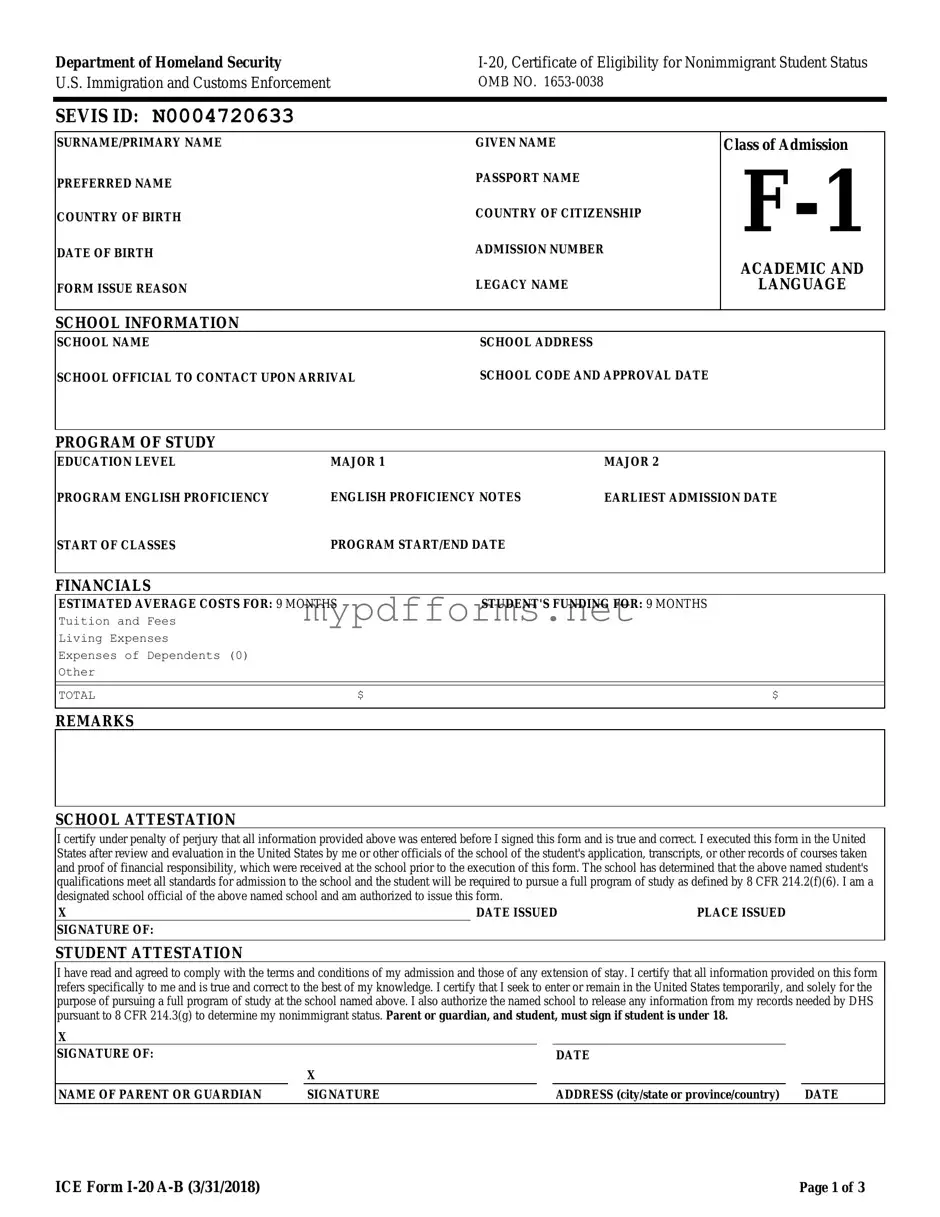Get I 20 Form in PDF
The I-20 form is a crucial document issued by the U.S. Department of Homeland Security, specifically designed for nonimmigrant students. It serves as a Certificate of Eligibility for Nonimmigrant Student Status, allowing students to apply for an F-1 visa and pursue their education in the United States. Understanding how to fill out and manage this form is essential for maintaining your student status.
Ready to get started? Click the button below to fill out the I-20 form.
Modify Document Here
